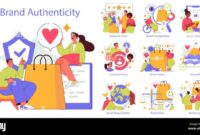Top Jewellery Trends That Are Driving Consumer Demand highlight the dynamic shifts in consumer preferences within the jewelry market. As we dive into this captivating subject, it’s essential to recognize how trends shape what people desire and how these trends are influenced by cultural shifts, technological advancements, and individual expression. With an ever-evolving landscape, understanding these trends not only benefits consumers looking for the latest styles but also helps retailers adapt to market demands.
From sustainable practices to personalized pieces, the current jewelry trends reflect broader societal changes and advancements in design techniques. As consumers become more conscious of their choices, the jewelry industry is responding with innovative trends that cater to diverse tastes and ethical considerations.
In today’s fast-paced world, where technology and connectivity shape our lives more than ever, understanding the significance of effective communication is paramount. Whether you’re engaging in a casual conversation or navigating the complexities of professional dialogue, mastering the art of communication is essential for personal and professional success. In this article, we’ll delve into the key aspects of effective communication, explore its various forms, and provide practical tips on how to enhance your skills in this area.
The Importance of Effective Communication
Effective communication is the cornerstone of any successful relationship, be it personal or professional. It fosters understanding, builds trust, and promotes collaboration. When people communicate effectively, they can articulate their thoughts clearly, listen actively, and respond appropriately, creating an environment where ideas can flourish and relationships can thrive.
In the workplace, effective communication is vital for teamwork. It helps to align goals, clarify expectations, and facilitate problem-solving. When team members can express their ideas and concerns openly, they are more likely to contribute to a productive and positive work atmosphere.
Moreover, in our personal lives, effective communication enables us to connect with others on a deeper level. It helps us to express our feelings, resolve conflicts, and build stronger relationships with family and friends. The ability to communicate effectively can significantly enhance our social interactions, leading to a more fulfilling life.
Types of Communication
Communication comes in many forms, each with its unique characteristics and best practices. Here are some of the primary types of communication:
1. Verbal Communication: This is the most straightforward form of communication and involves the use of spoken words. Whether in a face-to-face conversation, a presentation, or a phone call, verbal communication requires clarity and coherence to ensure the message is understood.
2. Non-Verbal Communication: Non-verbal cues, such as body language, facial expressions, and gestures, can significantly affect how a message is perceived. Being mindful of these cues is crucial, as they can either reinforce or contradict what is being said verbally.
3. Written Communication: From emails and reports to text messages and social media posts, written communication is essential in both professional and personal contexts. Clarity, organization, and a suitable tone are vital for ensuring the message is conveyed effectively.
4. Visual Communication: This involves the use of visual aids, such as charts, graphs, and images, to enhance understanding. Visuals can help to simplify complex information and make it more accessible to the audience.
5. Digital Communication: With the rise of technology, digital communication has become increasingly prevalent. This includes emails, instant messaging, social media, and video conferencing. Each platform has its etiquette and best practices that should be followed.
Barriers to Effective Communication
Despite the importance of effective communication, there are several barriers that can hinder our ability to convey messages clearly. Here are some common obstacles:
1. Language Differences: In a globalized world, language barriers can pose significant challenges. Misunderstandings can arise when individuals speak different languages or have varying levels of proficiency in a language.
2. Cultural Differences: Cultural nuances can influence communication styles and interpretations. What may be acceptable in one culture could be seen as offensive in another. Being culturally aware is essential for effective communication in diverse environments.
3. Emotional Barriers: Personal feelings can cloud judgment and affect how messages are received. Stress, anger, or sadness can impair our ability to listen and respond appropriately, leading to miscommunication.
4. Physical Barriers: Environmental factors, such as noise, distance, or inadequate technology, can disrupt communication. Ensuring a conducive environment for dialogue is crucial for effective exchanges.
5. Perceptual Barriers: Different perceptions of a situation can lead to misunderstandings. What one person sees as a problem, another may view as an opportunity. Being open-minded and empathetic can help bridge these gaps.
Tips for Improving Communication Skills
To enhance your communication skills, consider the following practical tips:
1. Listen Actively: One of the most crucial aspects of communication is listening. Give your full attention to the speaker, avoid interrupting, and respond thoughtfully. Active listening demonstrates respect and fosters a better understanding of the message.
2. Be Clear and Concise: Whether speaking or writing, aim for clarity and brevity. Avoid jargon and complicated language that may confuse your audience. Instead, use straightforward language that conveys your message effectively.
3. Observe Non-Verbal Cues: Pay attention to body language and facial expressions, both in yourself and others. Being aware of these non-verbal cues can enhance your understanding of the conversation and help you respond appropriately.
4. Practice Empathy: Try to understand the feelings and perspectives of others. Empathy allows you to connect on a deeper level and respond with sensitivity, which can strengthen relationships and improve communication.
5. Seek Feedback: Encourage others to provide feedback on your communication style. Constructive criticism can offer valuable insights into areas for improvement and help you become a more effective communicator.
6. Adapt to Your Audience: Tailor your communication style to suit the preferences and needs of your audience. Consider factors such as age, cultural background, and familiarity with the subject matter to ensure your message resonates.
7. Use Visual Aids: When appropriate, incorporate visual aids into your communication. Charts, graphs, and images can enhance understanding and retention of information, especially in complex discussions.
8. Stay Mindful of Tone: Your tone can significantly affect how your message is perceived. Strive for a tone that matches the context and purpose of your communication, whether it’s formal, friendly, or persuasive.
9. Engage in Continuous Learning: Communication is a skill that can always be improved. Take advantage of workshops, courses, and resources that focus on enhancing communication techniques and understanding.
10. Reflect on Your Experiences: After significant conversations or presentations, reflect on what went well and what could be improved. This practice can help you identify strengths and weaknesses in your communication style.
Conclusion
Effective communication is an essential skill that impacts every aspect of our lives. By understanding its importance and actively working to improve our communication abilities, we can foster better relationships, enhance collaboration, and achieve greater success in our personal and professional endeavors. Remember, the key to effective communication lies in practice, empathy, and a willingness to learn. Whether you’re engaging in a casual chat or delivering a professional presentation, honing your communication skills will undoubtedly lead to more meaningful and impactful interactions.
In summary, the exploration of Top Jewellery Trends That Are Driving Consumer Demand reveals a fascinating interplay between consumer behavior and market dynamics. As the industry continues to evolve, staying informed about these trends will empower both consumers and retailers to make choices that resonate with contemporary values and aesthetics. Embracing these trends not only enhances personal style but also promotes a deeper understanding of the cultural significance behind each piece of jewelry.
FAQs: Top Jewellery Trends That Are Driving Consumer Demand
What are the current top trends in jewelry?
Current top trends include sustainable materials, personalized designs, and bold statement pieces that reflect individuality.
How do consumer preferences influence jewelry trends?
Consumer preferences drive trends by reflecting societal values, such as sustainability and self-expression, prompting designers to innovate accordingly.
Are there specific types of jewelry that are more popular right now?
Yes, items like layered necklaces, stackable rings, and eco-friendly pieces are particularly popular among consumers today.
How does technology impact jewelry trends?

Technology influences jewelry trends through advancements in design tools and marketing, making it easier for consumers to access and customize their pieces.
What role do influencers play in setting jewelry trends?
Influencers significantly impact jewelry trends by showcasing new styles on social media, often sparking widespread interest and demand.



